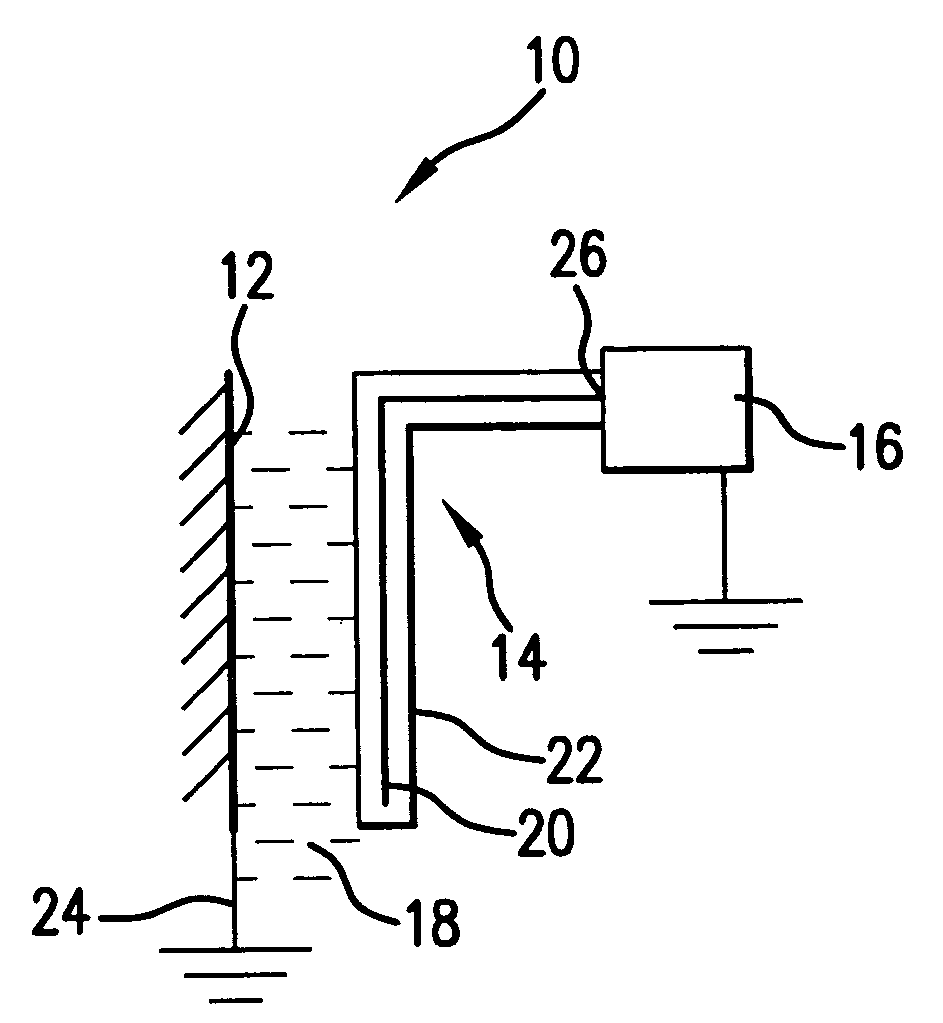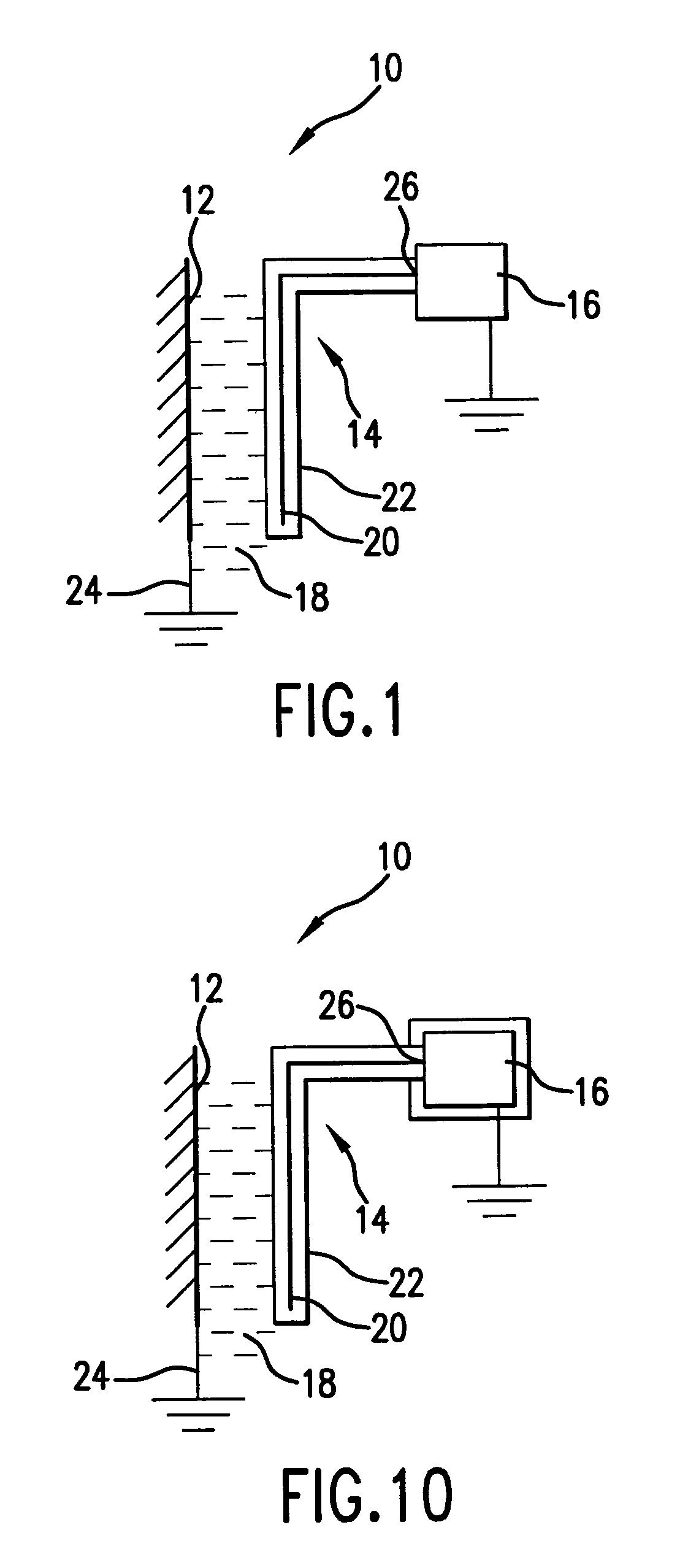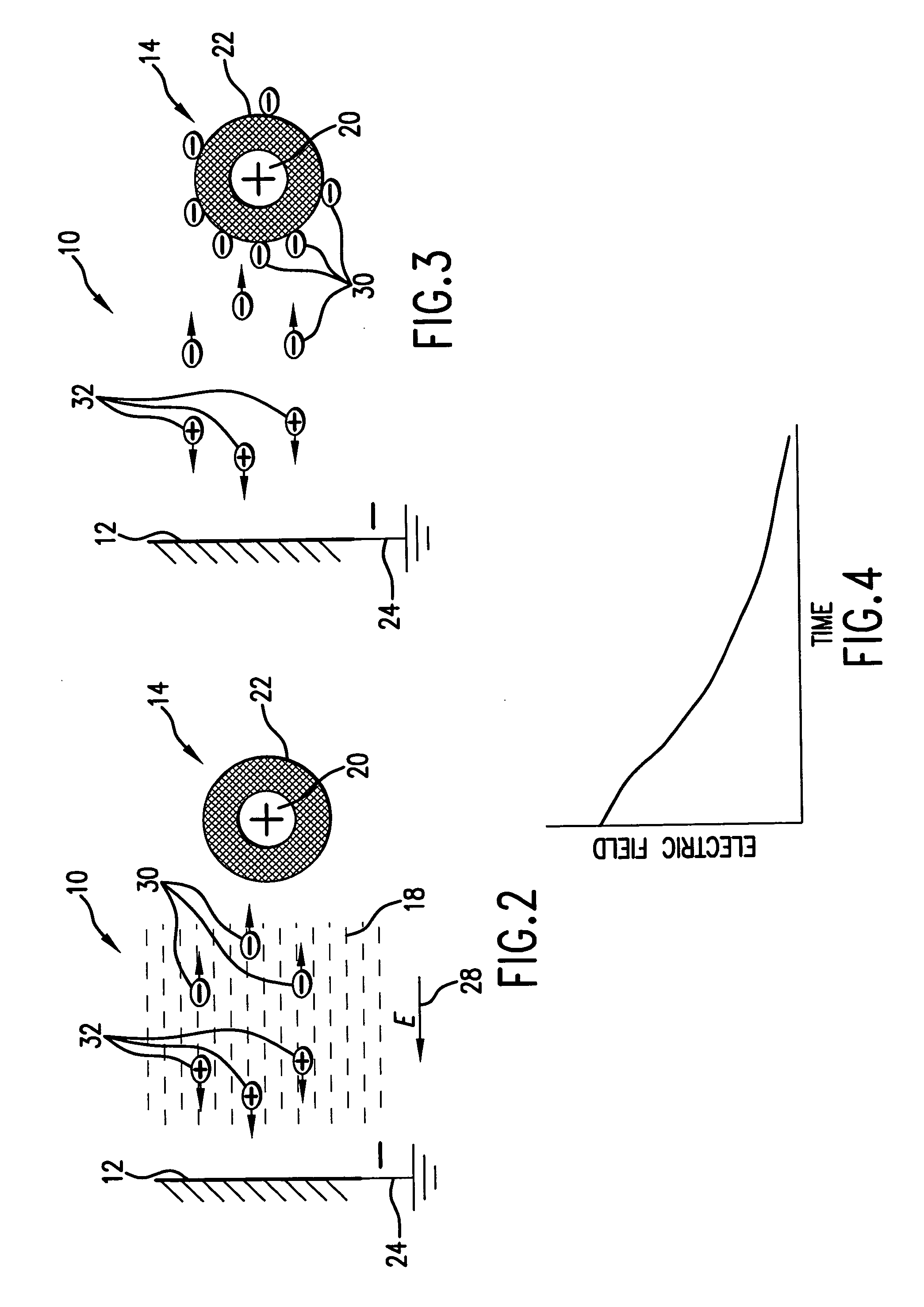Electrohydrodynamically (EHD) enhanced heat transfer system and method with an encapsulated electrode
a heat exchanger and electrohydrodynamic technology, applied in lighting and heating apparatus, cooling/ventilation/heating modification, electrical equipment, etc., can solve the problems of serious and vexing problems, affecting the performance of the thermal system, and removing dendritic crystals of ice, etc., to achieve low leakage current, low power consumption, and high efficiency
- Summary
- Abstract
- Description
- Claims
- Application Information
AI Technical Summary
Benefits of technology
Problems solved by technology
Method used
Image
Examples
Embodiment Construction
[0064]Referring to FIG. 1, a heat transfer system 10 enhanced by an electrohydrodynamic arrangement, includes a heat transfer surface 12; an encapsulated electrode 14, a high voltage power supply 16, and a dielectric working media 18 in contact with the heat transfer surface 12 and the encapsulated electrode 14. The encapsulated electrode 14 includes an electrode wire 20 (or an electrode plate, not shown in the Drawings) and an insulation layer 22 completely encapsulating the electrode wire 20 up to the high voltage power supply 16. The insulation layer may be formed of Teflon, Kapton, or any other insulating material including surface oxidation compounds.
[0065]The heat transfer surface 12 is coupled to the ground via the ground electrode 24. The high voltage power supply 16 coupled to the end 26 of the encapsulated electrode 14, energizes the encapsulated electrode 14 by either uni-polar or bi-directional pulses of energy. The encapsulated electrode 14 generates a high voltage elec...
PUM
| Property | Measurement | Unit |
|---|---|---|
| electric field | aaaaa | aaaaa |
| heat | aaaaa | aaaaa |
| voltage | aaaaa | aaaaa |
Abstract
Description
Claims
Application Information
 Login to View More
Login to View More - R&D
- Intellectual Property
- Life Sciences
- Materials
- Tech Scout
- Unparalleled Data Quality
- Higher Quality Content
- 60% Fewer Hallucinations
Browse by: Latest US Patents, China's latest patents, Technical Efficacy Thesaurus, Application Domain, Technology Topic, Popular Technical Reports.
© 2025 PatSnap. All rights reserved.Legal|Privacy policy|Modern Slavery Act Transparency Statement|Sitemap|About US| Contact US: help@patsnap.com



